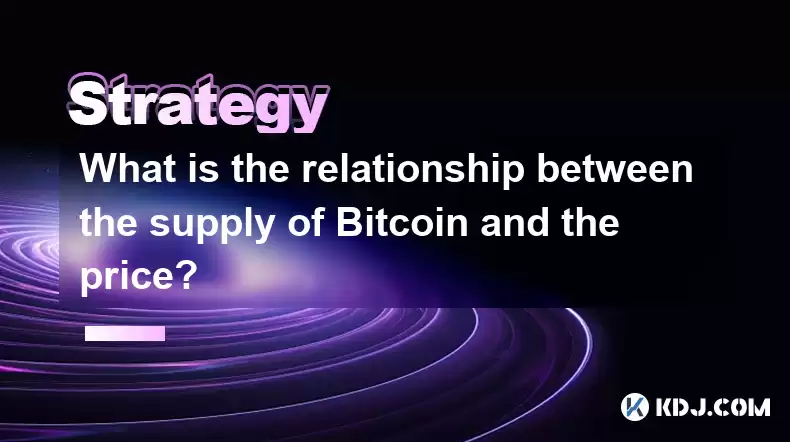-
 Bitcoin
Bitcoin $119300
2.40% -
 Ethereum
Ethereum $4254
-0.20% -
 XRP
XRP $3.184
-1.38% -
 Tether USDt
Tether USDt $1.000
0.00% -
 BNB
BNB $803.9
0.58% -
 Solana
Solana $183.1
1.50% -
 USDC
USDC $0.0000
0.01% -
 Dogecoin
Dogecoin $0.2339
-2.87% -
 TRON
TRON $0.3384
0.88% -
 Cardano
Cardano $0.8018
-0.29% -
 Hyperliquid
Hyperliquid $45.13
3.14% -
 Chainlink
Chainlink $22.10
0.96% -
 Stellar
Stellar $0.4439
-0.94% -
 Sui
Sui $3.875
-0.73% -
 Bitcoin Cash
Bitcoin Cash $570.7
0.24% -
 Hedera
Hedera $0.2589
-2.90% -
 Ethena USDe
Ethena USDe $1.001
-0.01% -
 Avalanche
Avalanche $23.83
-1.73% -
 Litecoin
Litecoin $123.8
2.61% -
 Toncoin
Toncoin $3.351
-1.13% -
 UNUS SED LEO
UNUS SED LEO $9.103
1.13% -
 Shiba Inu
Shiba Inu $0.00001356
-1.40% -
 Uniswap
Uniswap $10.93
-0.19% -
 Polkadot
Polkadot $4.057
-1.97% -
 Dai
Dai $1.000
0.01% -
 Cronos
Cronos $0.1646
4.66% -
 Ethena
Ethena $0.7974
8.11% -
 Pepe
Pepe $0.00001208
-2.89% -
 Bitget Token
Bitget Token $4.445
-1.70% -
 Monero
Monero $268.8
-2.00%
What is the relationship between the supply of Bitcoin and the price?
Bitcoin's finite supply, coupled with factors such as halvings, miner activity, and market sentiment, has a significant impact on its price behavior, driving fluctuations and potentially influencing long-term value appreciation.
Feb 25, 2025 at 10:55 am

Key Points:
- Understanding the Finite Supply of Bitcoin
- Scarcity's Impact on Price
- Historical Price Fluctuations in Relation to Supply
- Factors Influencing Supply and Price
- Market Sentiment and Speculation
Relationship between Bitcoin Supply and Price
1. Finite Supply:
- Bitcoin has a fixed maximum supply of 21 million coins, as determined by its genesis block.
- This limited supply creates a deflationary nature, as the number of bitcoins available for circulation cannot increase.
2. Scarcity and Price:
- The finite supply makes Bitcoin a scarce asset.
- Increased demand for a scarce asset can lead to an increase in its price.
3. Price Fluctuations and Supply:
- Historically, periods of increased Bitcoin supply (e.g., during miner block rewards) have often coincided with price dips.
- Conversely, periods of reduced supply (e.g., after major halvings) have often aligned with price increases.
4. Factors Influencing Supply and Price:
- Halvings: Bitcoin's halvings occur every four years and reduce the mining reward by half. Halvings have historically had a positive impact on price.
- Miner Activity: Miners play a crucial role in the supply of Bitcoin. Changes in mining difficulty and profitability can affect the rate of supply.
- Lost or Dormant Coins: A significant number of bitcoins have been lost or remain dormant, further reducing the available supply.
5. Market Sentiment and Speculation:
- Market sentiment and speculative behavior influence the demand for Bitcoin.
- Positive market sentiment and increased speculation can drive up demand and prices, while negative sentiment can lead to price declines.
FAQs
Q: How does the finite supply of Bitcoin impact its price?
- A: The finite supply creates scarcity, which can increase demand and subsequently lead to higher prices.
Q: What is the effect of Bitcoin halvings on price?
- A: Halvings reduce the supply of new bitcoins, which has historically had a positive impact on price.
Q: How does miner activity influence Bitcoin's supply and price?
- A: Increased mining difficulty and reduced profitability can slow down the supply of new bitcoins, potentially boosting prices.
Q: What role does market sentiment play in Bitcoin's price?
- A: Positive market sentiment can increase demand for Bitcoin, while negative sentiment can depress demand and lower prices.
Q: Can the supply of Bitcoin be increased beyond its maximum?
- A: No, the supply of Bitcoin is capped at 21 million coins, as determined by its creator, Satoshi Nakamoto.
Disclaimer:info@kdj.com
The information provided is not trading advice. kdj.com does not assume any responsibility for any investments made based on the information provided in this article. Cryptocurrencies are highly volatile and it is highly recommended that you invest with caution after thorough research!
If you believe that the content used on this website infringes your copyright, please contact us immediately (info@kdj.com) and we will delete it promptly.
- KiwiSavers, Crypto Returns, and Digital Investment: Are Kiwis Missing Out?
- 2025-08-11 06:30:11
- Ruvi AI's Sales Surge: Could It Outpace Tron in the Crypto Race?
- 2025-08-11 06:30:11
- Meme Coin Mania: Is Shiba Inu Out and Little Pepe In?
- 2025-08-11 06:50:12
- Bitcoin Casino Weekly Challenge: Hitting the Jackpot in Crypto Gaming
- 2025-08-11 06:50:12
- Cardano (ADA): Riding the Bull Cycle Wave to New Heights?
- 2025-08-11 07:10:12
- Bitcoin Institutional Holdings in 2025: A Bullish Outlook
- 2025-08-11 07:15:19
Related knowledge

How to use stop-loss orders to limit potential losses?
Aug 08,2025 at 02:01pm
Understanding Stop-Loss Orders in Cryptocurrency TradingA stop-loss order is a risk management tool used by traders to automatically sell a cryptocurr...

What are the most promising altcoins to invest in?
Aug 10,2025 at 11:42am
Understanding the Role of Private Keys in Cryptocurrency WalletsIn the world of cryptocurrency, private keys are the cornerstone of ownership and cont...

How to read cryptocurrency charts and use technical analysis?
Aug 08,2025 at 11:08am
Understanding the Basics of Cryptocurrency ChartsCryptocurrency charts are graphical representations of price movements over time. These charts are es...

What is the difference between long-term holding (HODLing) and short-term trading?
Aug 10,2025 at 05:30pm
Understanding HODLing in the Cryptocurrency SpaceThe term HODL originated from a typo in a 2013 Bitcoin forum post and has since become a widely accep...

How to do your own research (DYOR) before investing in a crypto project?
Aug 08,2025 at 09:07pm
Understanding the Core Principles of DYOR in CryptocurrencyEngaging in due diligence before investing in any cryptocurrency project is essential to mi...

How to build a diversified crypto portfolio?
Aug 09,2025 at 12:21pm
Understanding the Importance of Diversification in CryptoDiversification in the cryptocurrency space is a strategy used to reduce risk by spreading in...

How to use stop-loss orders to limit potential losses?
Aug 08,2025 at 02:01pm
Understanding Stop-Loss Orders in Cryptocurrency TradingA stop-loss order is a risk management tool used by traders to automatically sell a cryptocurr...

What are the most promising altcoins to invest in?
Aug 10,2025 at 11:42am
Understanding the Role of Private Keys in Cryptocurrency WalletsIn the world of cryptocurrency, private keys are the cornerstone of ownership and cont...

How to read cryptocurrency charts and use technical analysis?
Aug 08,2025 at 11:08am
Understanding the Basics of Cryptocurrency ChartsCryptocurrency charts are graphical representations of price movements over time. These charts are es...

What is the difference between long-term holding (HODLing) and short-term trading?
Aug 10,2025 at 05:30pm
Understanding HODLing in the Cryptocurrency SpaceThe term HODL originated from a typo in a 2013 Bitcoin forum post and has since become a widely accep...

How to do your own research (DYOR) before investing in a crypto project?
Aug 08,2025 at 09:07pm
Understanding the Core Principles of DYOR in CryptocurrencyEngaging in due diligence before investing in any cryptocurrency project is essential to mi...

How to build a diversified crypto portfolio?
Aug 09,2025 at 12:21pm
Understanding the Importance of Diversification in CryptoDiversification in the cryptocurrency space is a strategy used to reduce risk by spreading in...
See all articles

























































































